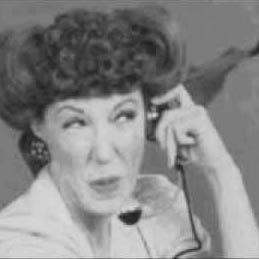The Lenses I Use
Freudian Drive Theory
The basis of, or a reaction to, all psychodynamic therapy, Sigmund Freud postulated all human mental health issues are reactions to anxiety and that we have drives that are an attempt to satisfy needs. We use defense mechanisms (projection, passive-aggression, regression, etc.) to quell these anxieties, because we think we can’t live through the pain of the past. The way we heal is using the “talking cure,” in which we look at dreams and free association to bring issues out of the unconscious so we can work with them. This guy was a genius, but in many ways wrong. All the other approaches agree or react to him.
Object Relations
These folks are, as are all the others, neo-Freudians. Freud said we are motivated by “drives,” these thinkers believe we are motivated by needs, mainly the need to be loved and accepted. The “objects” are the people who are important to us, even when they aren’t nice to us. We internalize what we imagine they think of us and carry it around with us and use this to determine who are. There’s a British cam including Melanie Klein and Donald Winnicott (British pediatrician and all around great guy), and an American camp, including Margaret Mahler. This is the school of thought that brought us attachment theory. They have their own defense mechanism focus.
Ego Psychology
These very groovy neo-Freudians are concerned with the health of the ego, or the self, and see the ego as healthy and integrated or more challenged, or fragmented. The measure of this is seen in ego functions, like the ability to reality or distortion check, impulse control, using good judgment, affect (emotions) control, self-esteem regulation, etc. They are also very interested certain types of defense mechanisms and rank them in level of maturity (appropriate age use). These guys are very cool.
Psychosocial Ego Development
This is basically Erik Erikson and his stages of development based on age. He takes Freud and expands him. He is someone you may have actually heard of from your Introduction to Psychology course.
Self Psychology
This is a uniquely American theory, and generally attributed to Heinz Kohut, who was originally interested in the narcissism, and developed a neo-Freudian theory out of this focus. He looks at the health of the psyche as tripolar, with the need to recognize the grandiose self, an idealized parent imago, and the need for twinship. He is discusses “guilty man,” the type of pre-WWII personality, who feels he has let down the world, versus “tragic man,” post-WWII, who feels he has been let down by the world. Very sociological.
Relational Therapy
I don’t use this directly in the individual work I do, but it is the basis for the couple’s therapy I offer, specifically Terry Real’s Relational Couple’s work. In general, this is the opposite of what old-timey therapy is purported to be, a cold, distant, non-emotional person who says things like, “I see,” and “How does that make you feel?” These folks want to connect with the patient, and that includes being openly empathetic and offering self-disclosure.
Internal Family Systems (IFS)
Eye Movement Desensitization and Reprocessing (EMDR)
Looking-glass Self
“I am not what I think I am, I am not what you think I am, I am what I think you think I am.” Charles Horton Cooley, 1902.
This is a sociological concept, albeit psychological-sociology. It was developed in the early 20th century to help understand how we have a “self,” that thing that is uniquely you and no one else. This is sociology because it is necessary to have a society and culture in order for it to exist. The basic idea is that you don’t have the ability to truly see yourself; you don’t know what others think of you; instead you imagine or interpret what others think of you and have to grapple with this information, as imperfect as it is.




